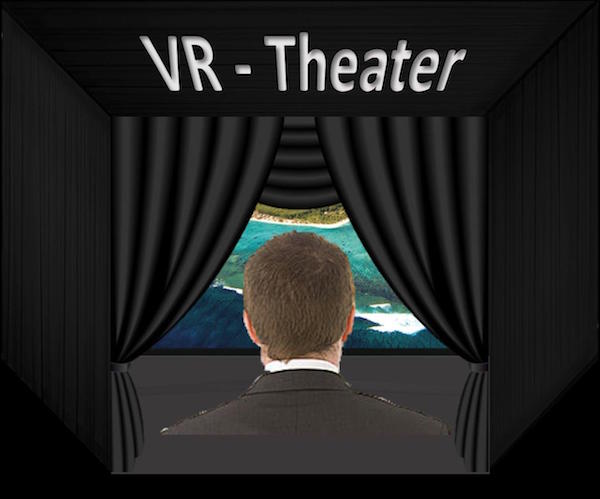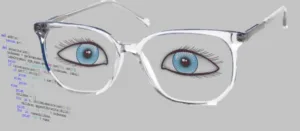For a few years now we have been talking about the great opportunities AR and VR will be bringing to the CE market. At a first glance this seems to describe a new set of hardware devices that provide the user with the necessary imagery that makes up AR, VR and anything in between.

On a closer look that will also include all the software and content created for this ‘new’ media.
AR / VR Hardware pushing the boundaries
A closer look at the AR / VR hardware solutions that exist today makes it clear that we are really pushing the boundaries of technology here. The same way the Apple Retina display idea spawned a new race to the highest resolution display in mobile devices, AR / VR headsets will create a complete new technology of display devices. While this may include really new display technology, there is so much more we have to develop before we have an AR / VR headset that actually shows imagery that looks remotely like some form of reality.
Think of the development of cinema, from black and white images to full color and even audio, the goal was always to create a medium that represented some form of reality. Watching a movie is taking the consumer away from his real life and putting him into a fantasy or ‘virtual’ world. This could arguably be seen as a ‘virtual reality device’ especially when viewed in a dark environment of a movie cinema. VR is now shrinking the form factor and is widening the field of view (by looking around) to come even closer to real life. The limitations stem from the underlying technology such as the display resolution, data transfer, optical performance, etc. We are trading form factor for visual performance at this point.
 Welcome to the VR Theater!
Welcome to the VR Theater!
By putting VR glasses on our heads we disengage from reality in the same way as if we are entering a cinema and the main presentation starts. Life around us stops for the moment. Here is where the development of cinema, TV and mobile devices has led us so far. While the cinema addresses a larger crowd in a very immersive setting, the TV with less display real estate is built for a smaller group of viewers and the typical living room setting allows for people to be easily distracted.
Mobile devices are one person devices that allow us to watch content everywhere but with the smallest display size. Our human visual system is built in a very simple way, we see in high resolution whatever is in our focus and directly in front of us while everything on the periphery is in low resolution. Our brain is trained to react to any kind of movement in the peripheral vison, a great thing to have when living among other creatures that are trying to eat you. As it turns out, this also works well for driving a car and avoiding collisions with people possibly hitting you from the side.
Bringing this all together, it seems that a VR device combines the immersiveness of the cinema with the mobility of a smartphone and the image quality of a TV / cinema. So what are we supposed to watch with this new form factor? A two hour movie, a YouTube video or the daily news? You take your pick and so far there is no clear answer for the consumer either, which may be part of the issue of lower than expected adoption rates.
High Resolution is Getting Closer
With the development of high resolution mobile display devices it became possible to put this device closer to our eyes and covering a wider viewing angle than any 85”+ flat screen TV can at 10 feet (3m) distance. Besides some minor issues such as neck strain from the weight, lousy resolution in our focus area, color break up, and others we were actually getting closer to a stereoscopic display than we ever were with any 3D TV. Image separation is a given as each eye has its own display real estate assigned.
At the same time, the vergence – accommodation conflict (another issue with stereoscopic 3D imagery) limits the usability for many consumer who are sensitive to this form of motion sickness. In other words, besides a substandard image quality you may actually feel sick after using the system.
How the industry is trying to address these issues is a good topic for another article.
From a hardware standpoint we are still just scratching the surface of what is needed to create a VR headset that ticks off all the marks the average consumer will have. And for AR, let’s just say that the technical challenges are even greater and we are even further away from the ultimate solution.
Content is so much easier to create – or is it?
When we look at the content side, VR is basically driven by gaming and commercial applications. Besides all the efforts from Oculus to move past the consumer barrier, so far adoption has been soft, to state it lightly. We have to see if the latest price drop of the Oculus Rift will be met with more buying enthusiasm.
Many analysts and industry leaders are actually proposing AR as the better long term alternative, but what they are proposing is a form of software extension for mobile display devices to bring new content to the existing user base. This approach will lead to a much faster ‘AR’ adoption compared to the current approach of VR headsets or the failed first attempt of Google Glass.
Nevertheless, even in this easy accessible space of mobile apps the consumer interest is weak at best. It will need some ‘have to have’ apps before it will become a consumer favorite. The only way to actually see the new content is by watching the real world around you through the camera of your smartphone. What sounds like a crazy idea at first worked surprisingly well for Pokemon Go, unfortunately only for them so far.
So what is with the idea of 360 degree video? Camera systems are now available in every price range so content acquisition should be easy. Not so fast. Content like in a movie is an art form that requires a lot of learning on how capture the audience’s interest and focus their attention on what the director wants to convey. How do you do that when the consumer can look in every direction as his own leisure? Directional audio may help but still the is always the distraction of something else to look at. A one dimensional story telling as we are used to from the movies seems almost impossible.
Image:N Hildebrand
Watching environments seems to be a logical choice as the consumer can chose any view he wants from a wide array of choices. On the other hand watching an environment hasn’t won an Oscar yet and I doubt that this is direction we will be going with content for VR in the long run. Instead content creation has to develop a new form that works well with the VR media.
AR is much easier from the content perspective as we are dealing more or less with information. Since the marketing and advertising possibilities are almost endless, the content production will be driven by commercial interests rather than artistic ones. After you watch the world with an AR overlay, looking at a shopping center will never be the same, again. And while a video call or messaging will hit you sitting in your favorite restaurant, AR may help you decide on your supper as images of the respective entrees may hover over the table, making the decision so much easier. If you are more health-oriented the health consequences of your restaurant and meal choice may be right there in front of your eyeballs as well.
Of course, for the foreseeable future AR will require to watch the world on your mobile device or wear some form of glasses. Neither is a very enticing option with the current form factor and image quality AR glasses provide. While many developers are promising to have the perfect AR glasses device ready within the next few months, I am a little skeptical about their ability to deliver just that. I believe that the next round of AR glasses will be better but not perfect by any means. I can still hope for a surprise though. NH

